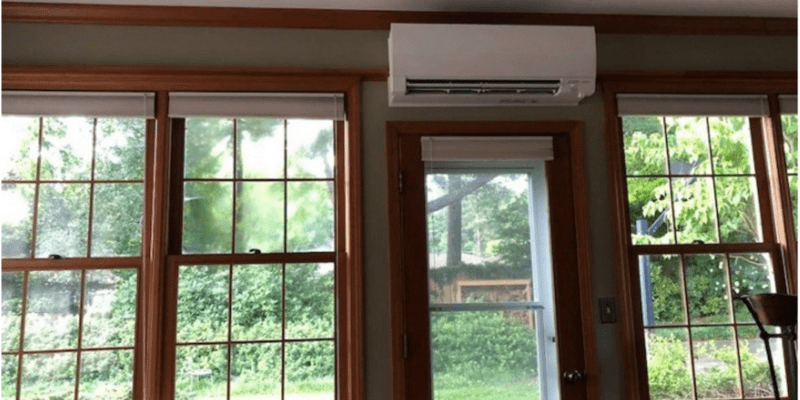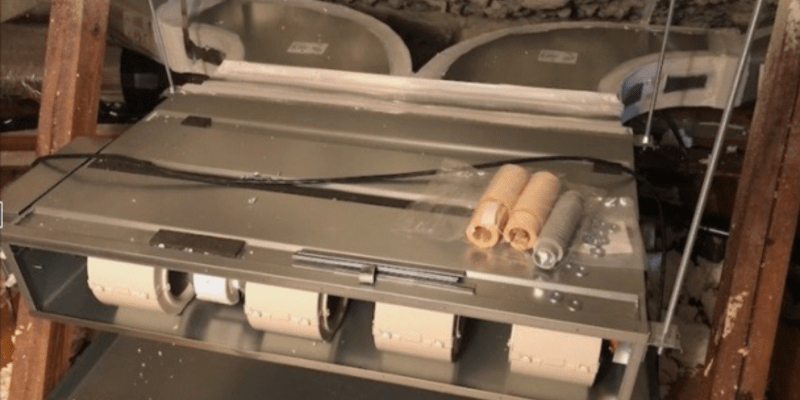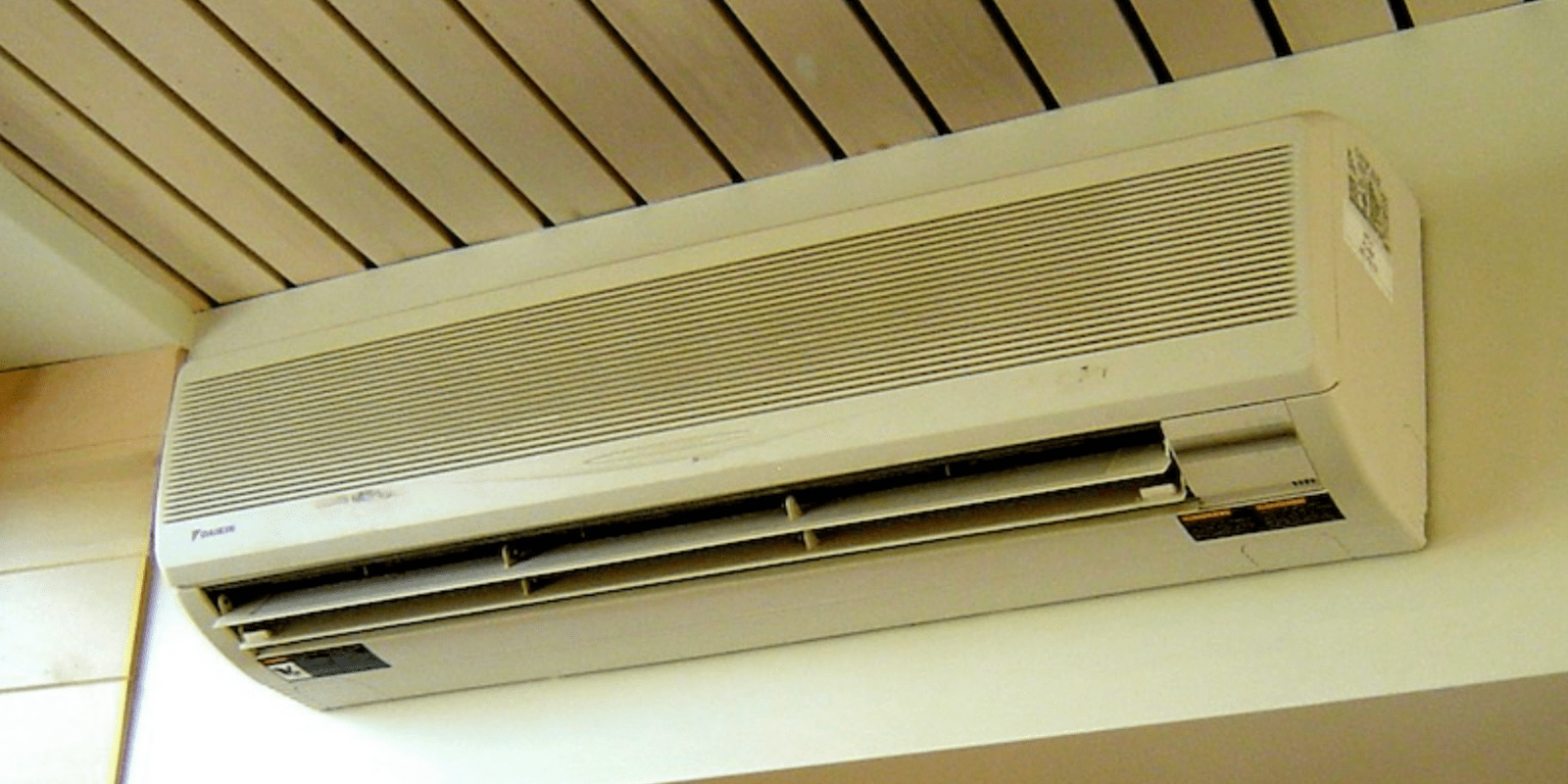What Is a Mini-Split Heat Pump?
Ah, mini-splits. They’re all the rage in the world of high-performance HVAC. But what exactly is a mini-split heat pump? Unfortunately, the terminology around this technology is confusing because it’s used so inconsistently. Let’s start at the beginning. Well, OK, not all the way at the beginning. I’m not going to explain what a heat pump is, but here’s a primer on how they work for heating.
The Basic Meaning of Mini-Split
The term “mini-split” originally referred to a split system heat pump, used for heating or cooling or both, with a smaller capacity than conventional systems. In that sense, a mini-split is just what its name says: a small split system heat pump. It gets confusing in the different ways manufacturers make these lower-capacity, split-system heat pumps.
A mini-split, for example, can have a conventional fixed-capacity compressor or an inverter-driven variable-capacity compressor. So, a mini-split could be a conventional heat pump that’s just smaller. Or, it could be a smaller heat pump with variable capacity. The former type is rare, though, so when you hear the term “mini-split,” you should think of the type with the inverter-driven compressor with variable capacity.
But it gets worse. This heating and cooling system has outgrown its name…at least the “mini” part. Yes, you can still get them down to a half-ton of capacity (6,000 BTU per hour), with smaller capacities on the way. But you can also get mini-splits that have a capacity of 4 tons (48,000 BTU per hour), which is far from “mini.”
Is It a Mini-Split…or a Multi-Split?
Another confusing area is that with this type of heat pump, the outdoor unit can be connected to one indoor unit (referred to as one-to-one), or it could be connected to multiple indoor units. Some people distinguish these two types by using the term “mini-split” only for the one-to-one configuration. They say that when you have more than one indoor unit on a single outdoor unit, that’s a multi-split heat pump.

The wall-mounted ductless mini-split heat pump in my sunroom. This is the only indoor unit connected to the outdoor unit, making it a one-to-one setup.
If we go with that dividing line, I have both a mini-split and a multi-split in my house. The central part of the house is heated and cooled with one outdoor unit connected to two indoor ducted air handlers. That would make it a multi-split. I use a one-to-one ductless system for my sunroom (above).
Are All Mini-Splits Ductless?
And then there’s the issue of the type of indoor unit. Some are ductless, and they come in different flavors: wall-mounted, ceiling cassettes, and floor-mounted. Others are ducted, and they come in horizontal ducted or multi-position types. Some people use the term “mini-split” only for indoor ductless units. Others refer to any split system with smaller capacity as a mini-split, whether the indoor unit is ducted or ductless.

One of the ducted air handlers for the mini-split heat pump being installed in my house in 2019
I use the term “mini-split” for all of the above. Since mini-splits with fixed-capacity compressors are rare, you don’t need to worry about that confusion. If you’re talking to someone about mini-splits, you should be able to tell from the context how they use the term. If not, ask them to clarify.
Inverter-Driven Mini-Split Heat Pumps
Inverter-driven mini-split heat pumps are the future for high-performance homes. I’ve got them in my home, and it’s what we specify in most of our HVAC design jobs at Energy Vanguard. Their high efficiency and variable capacity that can ramp down to very low values are perfect for superinsulated, airtight homes, such as zero energy homes or passive homes. And they work well in less efficient homes, too.
They give you a couple of other benefits. Their lower capacity means you can zone your heating and cooling with separate pieces of equipment. And using separate pieces of equipment provides resilience. If one heat pump stops working, you can still heat or cool the parts of the house that have operable equipment.
One final point here concerns the one-to-one configuration. If you want the highest efficiency, the best zone-to-zone control, and the most resilience, use only one indoor unit on each outdoor unit. Multi-split systems can work fine, but they’re just not as good as one-to-one setups.
Can You Oversize Heat Pumps?
One of the great advantages of using mini-splits is their variable capacity, but by oversizing them, you can lose that advantage completely. That 6,000 BTU per hour mini-split in a room with 1,500 BTU per hour of cooling load doesn’t act at all like it has variable capacity because it’s always running at the lowest capacity.
So, yes, you absolutely can oversize a mini-split. And when you do, you end up with some of the same problems from oversizing conventional systems: poor humidity control, short cycling, and wasted money.
When a contractor proposes seven indoor ductless units for a 2,100 square foot house without a load calculation, there’s close to a 100% chance that the systems will be oversized. And this problem happens with new homes that get load calculations, too, unless the load calculations are done correctly. You’ve got to look at the specifications for any mini-split heat pump in conjunction with the heating and cooling loads of the home and put in one that will take full advantage of the variable capacity.
Heat Pumps Are the Future of HVAC
Whether you live in frigid Minnesota or hot and humid Georgia, as I do, going with a heat pump is a great idea, especially if you’re replacing a gas heating system. Unlike fossil gas, electricity is getting cleaner, and mini-split heat pumps are the most efficient way to use clean energy for heating and cooling.
Allison A. Bailes III, Ph.D., is a speaker, writer, building science consultant, and the founder of Energy Vanguard in Decatur, Georgia. He has a doctorate in physics and writes the Energy Vanguard Blog. He is also writing a book on building science. You can follow him on Twitter at @EnergyVanguard.


MARVIN WEIRICH says:
From what I’m reading, many (most?) HVAC contractors bypass the rigorous Manual J heat gain/loss calculations in favor of a quick and easy rule-of-thumb calculation and end with a “safe” (over-sized) system. Where can one find a good company to do right-sized calculations? I would then take it to my HVAC contractor and firmly stick with not over 10-15% oversizing.
Jamy Bacchus says:
I would add there are Scope 1 direct leakage emissions with regard to refrigerants. Most US mini-splits and VRF systems use R-410a which has a horribly high 20-yr GWP of ~4300 and a 100-yr GWP of nearly 2000 (all depending on which version of IPCC you reference. Let’s assume a typical 3-ton split system has ~3lb/ton of charge including the line sets. With 100-yr GWPs and assuming a 15-yr service life and an annual leakage rate of 5% per year and an end-of-life of nearly 80% per CA Air Resource Board, then we have almost 0.50 metric tonne of CO2e per year and potentially another 5.8 tonnes at the end of life. R-410a is likely to get quite expensive 15 yrs from now so hopefully an HVAC tech would recapture all of that and resell it. But it’s a non-zero emissions value. Even R-470a which might be a drop in for R-410a is only half as bad in GWP at nearly 1000. WA State’s new refrigerant regs exempt systems with a low charge (pound-mass <50).
If we compare this to the US grid using eGRID 2020 numbers and not hourly forecasts, e.g., NREL Cambium, we can assume a home uses ~2,000 kWh/yr on that AC (we'll ignore the heating aspects for now) at an annualized grid emission rate of 0.82 # of CO2e/kWh, then we're 0.75 MT of CO2e/yr compared to the 0.50 MT of CO2e/yr from the Scope 1 leakage. It's non-negligible. And if your net zero home is able to offsetting a lot of those Scope 2 emissions then you still have the direct leakage unaccounted for.
Kenny Byrne says:
Good afternoon
Where do I get these pumps
Regards
Kenny
Joe Emerson says:
Most up to date HVAC installers carry them – usually quality companies such as Mitsubishi and others listed in our directory. Be sure to find an installer who is experienced in sizing them propeerly. Also Home Depot and other suppliers now carry them,but you will need to do your due diligence with regard to the quality and get professional advice with regard to their installation.
ESCO says:
A very detailed explanation. Thank you!
Happy Hiller says:
Well explained. Thanks.
Fedric Kolin says:
I completely agree with the article’s assessment of inverter-driven mini-split heat pumps being the future for high-performance homes. I also have them installed in my home, and they have made a world of difference in terms of efficiency and comfort.